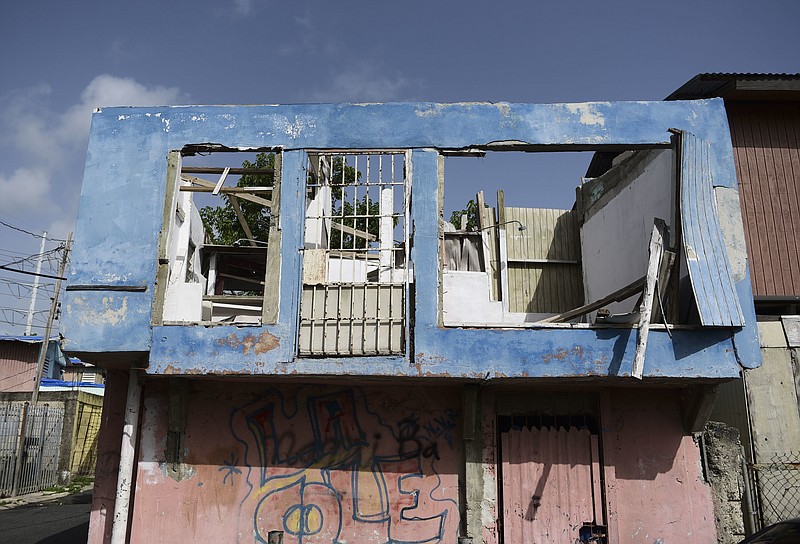SAN JUAN, Puerto Rico (AP) — Hurricane Maria ripped away part of the steel roof from Carmen Lidia Torres Mercado’s home in the Puerto Rican capital. Nine months later, she is still relying on a blue plastic tarp to protect her home, even with a new storm season already two weeks old.
Torres points out where rain seeps into the bedroom of her small house in a San Juan neighborhood known as Barriada Figueroa, where the narrow streets surged with floodwaters during the Sept. 20 storm. But the 60-year-old retiree said she has no money to fix it on her own and doesn’t have the documents proving home ownership that she needs to qualify for assistance from the Federal Emergency Management Agency.
“In truth, this isn’t a suitable place to live,” Torres said in an interview at her home on a recent morning.
There are thousands of people in similar circumstances across Puerto Rico nearly nine months since the most devastating storm to strike the island in decades. Blue tarps or sturdier plastic sheets installed by the U.S. Army Corps of Engineers are still widely visible around the island, though FEMA and local government agencies say they can’t say for certain how many roofs still need to be replaced.
Many people lack insurance or other resources to rebuild on their own. While the U.S. and Puerto Rican government have helped with grants and loans, they haven’t been enough on an island where nearly half the people live in poverty.
Some are renters like Gabriel Figueroa, a self-employed handyman in San Juan, who said the owner of the house moved to the U.S. and hasn’t bothered to replace the roof panels that were blown away in the storm. He’s saving up the $2,000 he needs to do it himself, but isn’t there yet.
“I don’t want to wait much longer,” he said. “I have kids and I have to protect them.”
There has been significant progress in recovery in general. Power, water and cellphone service have been restored to more than 95 percent of Puerto Ricans. Businesses are operating and the roads are no longer free-for-alls now that many traffic lights are working again. There are signs of economic recovery, with the government reporting last week that unemployment for May was 9.6 percent, the lowest level in almost 30 years.
But housing remains a challenge. Mayor Rafael Surillo of Yabucoa, the small southeastern town near where Maria made landfall, said at least 800 homes there still have temporary roofs in need of replacement. The San Juan’s mayor’s office says there are at least 2,000 in the capital, several thousand more in the metropolitan area.
So many temporary roofs remain, Surillo said, because people either can’t qualify for loans or grants — often because they don’t have the titles to their property or are missing documents — or the amount of assistance they can get isn’t enough to cover the cost of repairs. Local officials have been working with people to secure new property title documents, but it has been difficult.
“The reconstruction has been extremely slow, dangerously slow,” Surillo said.
FEMA, which was accepting initial applications for assistance through Monday, has had a visible presence on the island, distributing 126,000 blue tarps and coordinating the installation of sturdier, but still temporary, blue plastic sheets by the Corps of Engineers on nearly 60,000 homes. The agency said it has approved 457,000 applications for individual assistance, totaling $1.3 billion.

